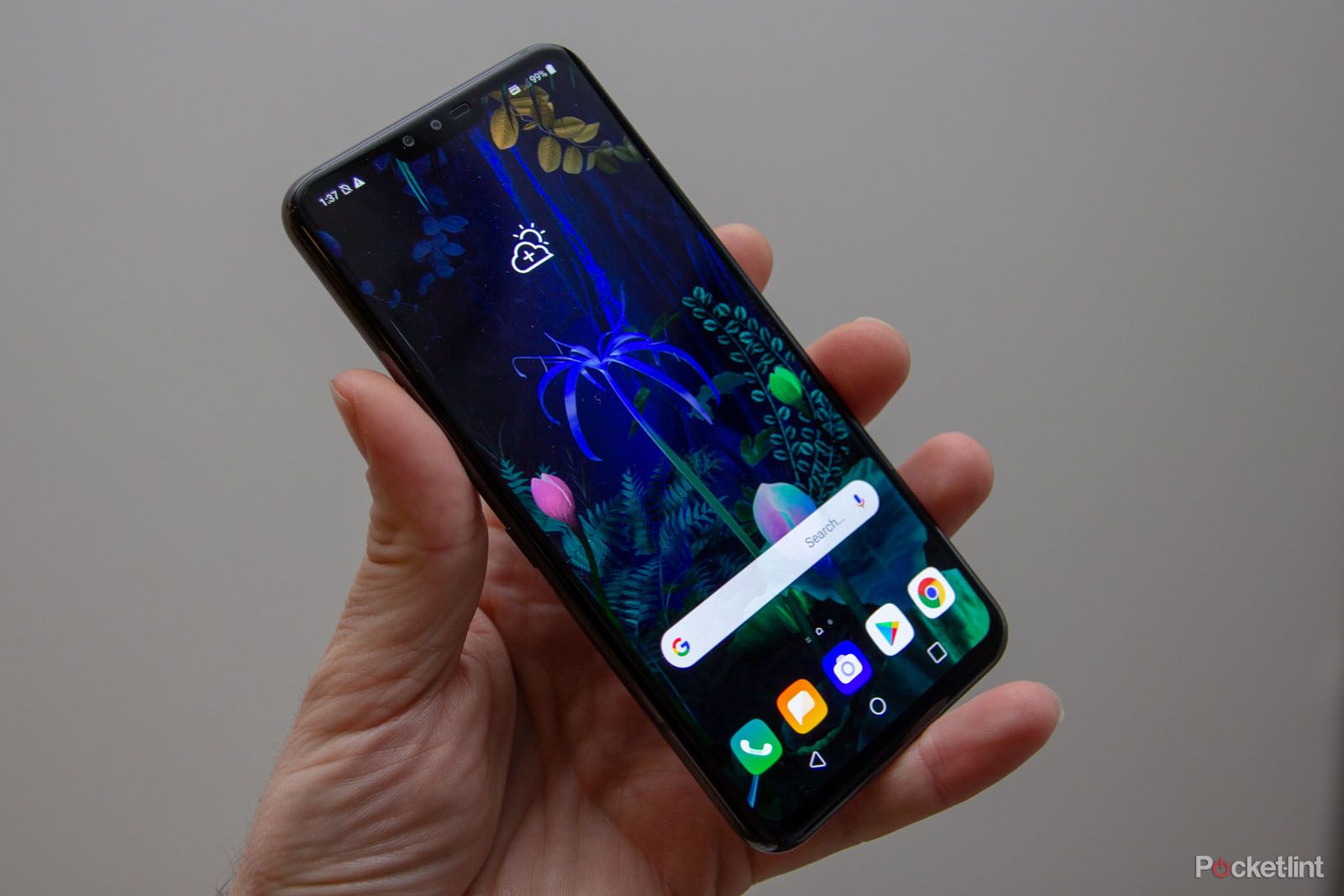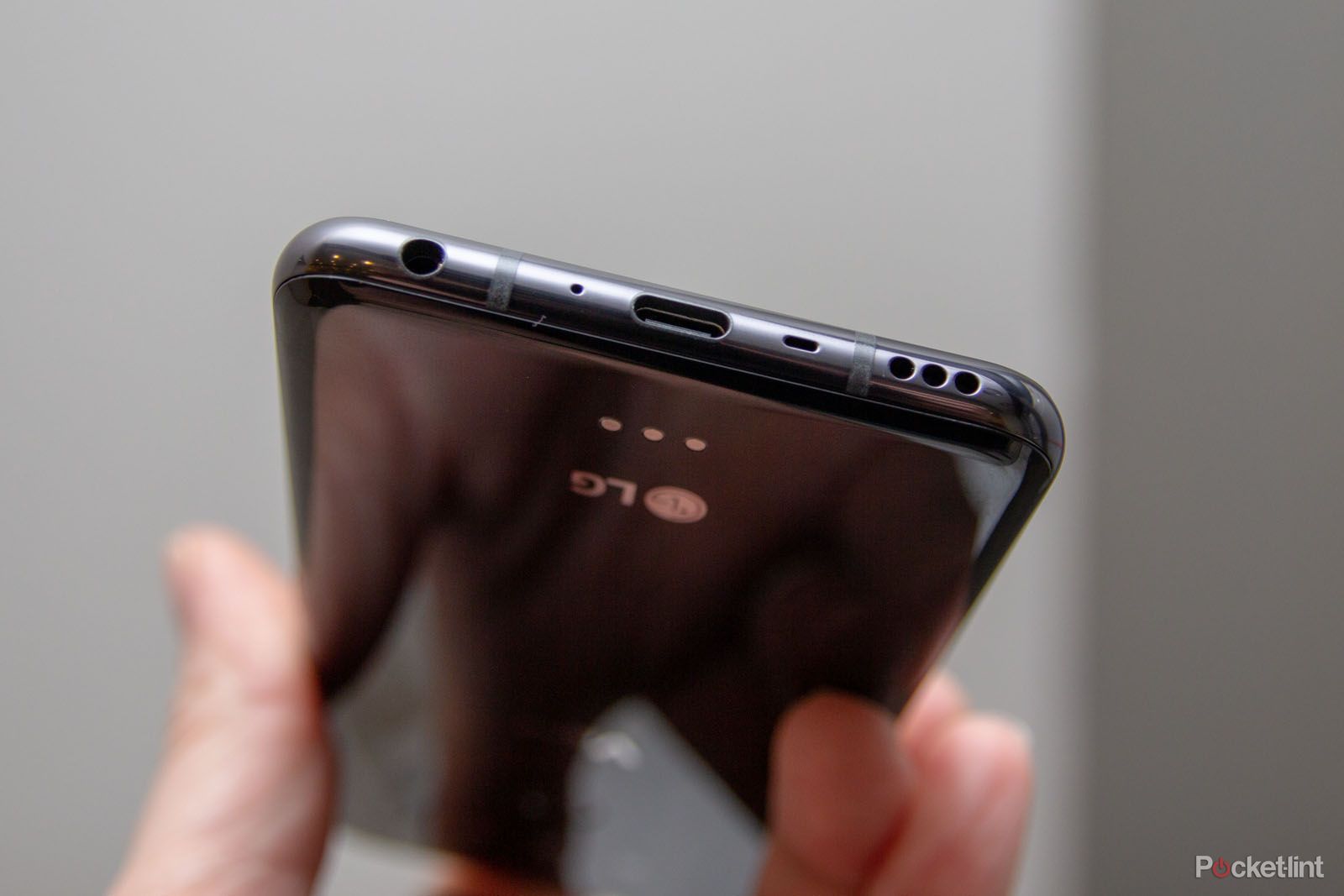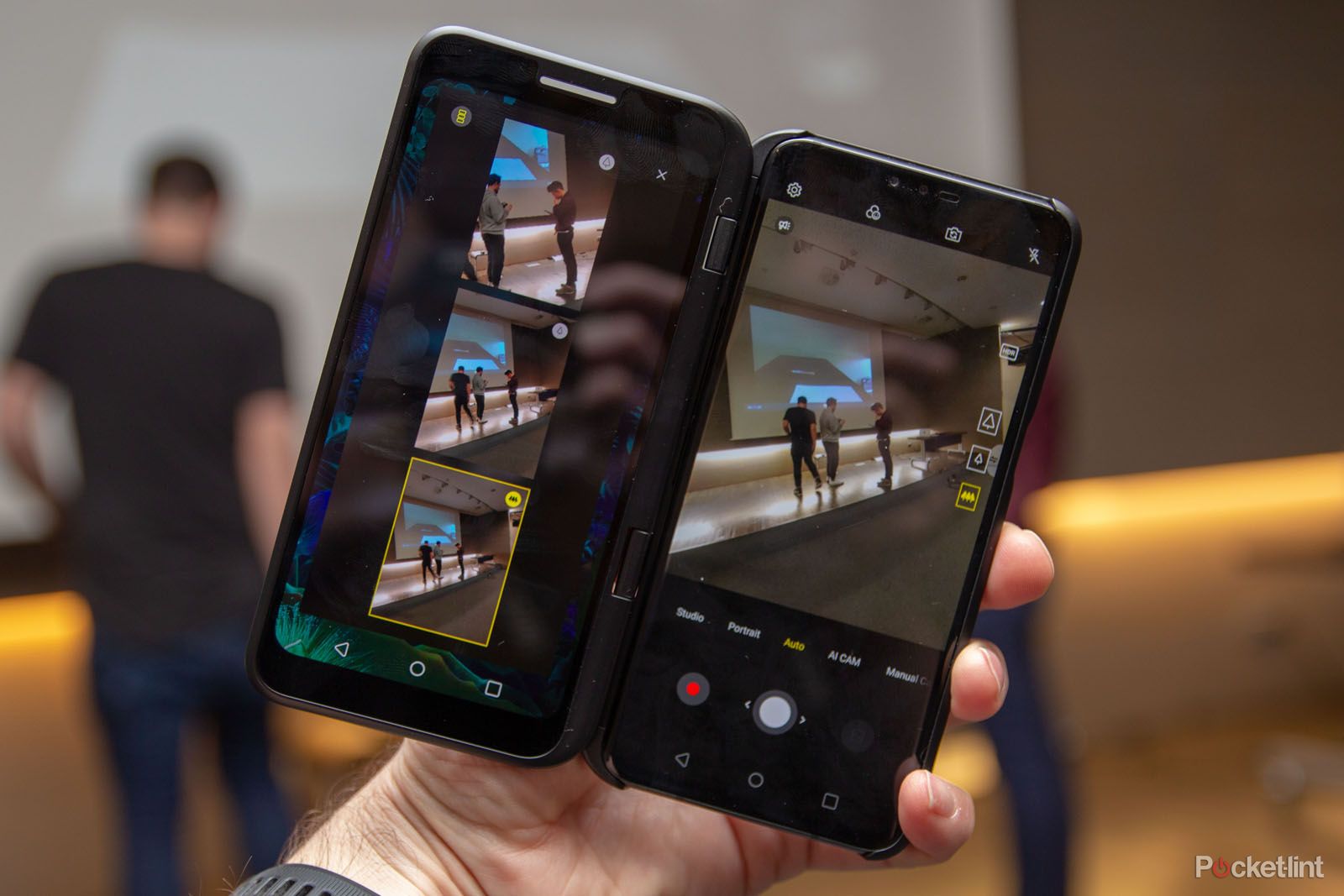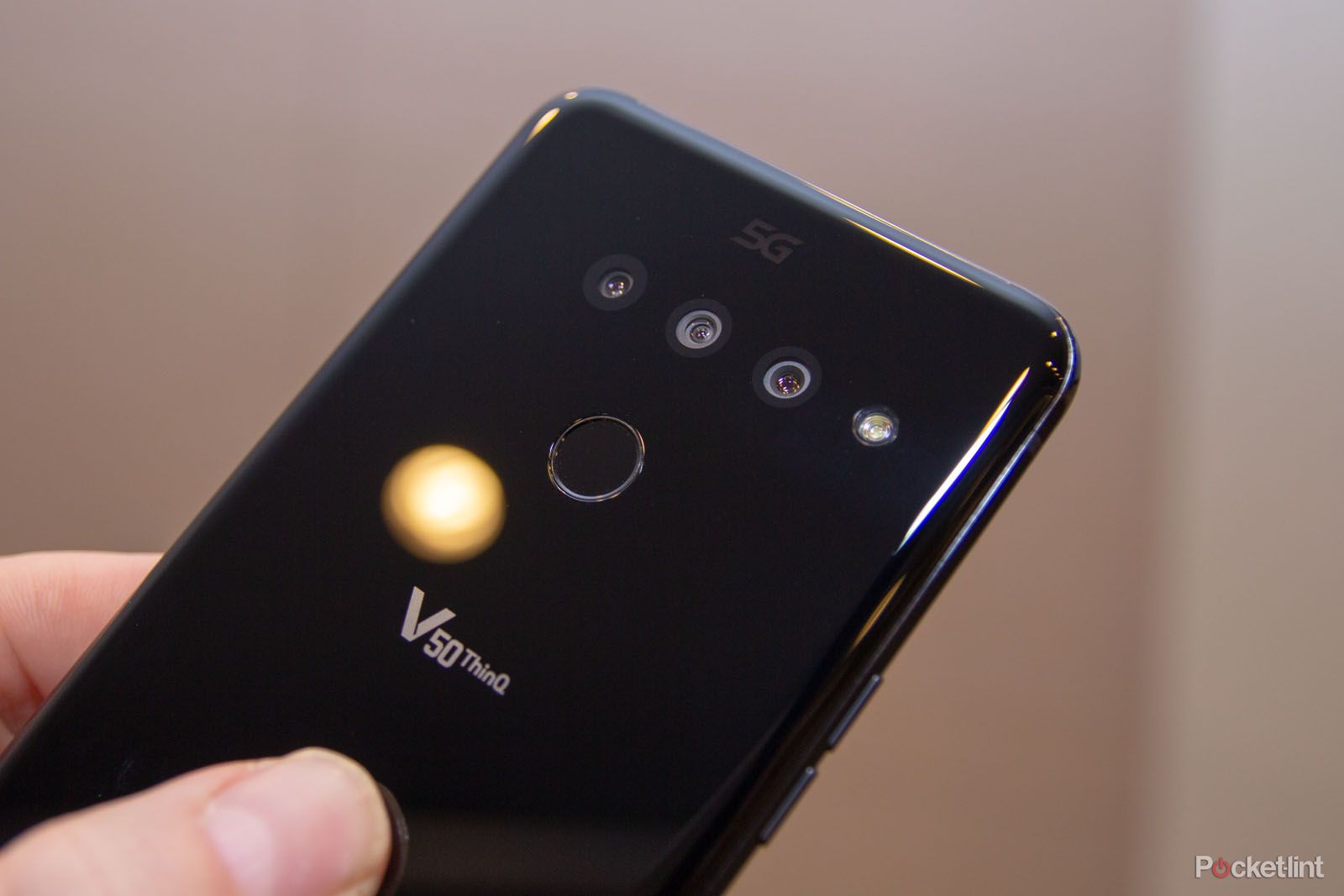LG wanted to be quick to market with the LG V50 ThinQ, so it launches its first 5G device alongside the LG G8 ThinQ.
The differentiation between these two phones is that the G8 - and the G series going forward - is going to stay as a 4G LTE device, while the V50 and V devices will move forward into 5G.
That slightly changes the position of one being a rugged phone for those who love shooting video; instead, LG is building on its flagship devices to keep its phones moving forward.
Our quick take
Much of what the LG V50 ThinQ offers sounds familiar - and that's because it is. The LG V50 is an evolution of the LG V40, bringing much the same experience, a similar design and pretty close tech specs, but with some important bumps to accommodate 5G. There's more power and a bigger battery.
The Dual Screen is really the new addition and brings something that you don't get elsewhere. It's an innovative idea, a second screen when you need it, a case when you don't and it side-steps the challenge presented by folding phones - while being all the more conventional.
The prices and availability - as well as the carriers - remains something of an unknown, but we'll update as soon as we know more.
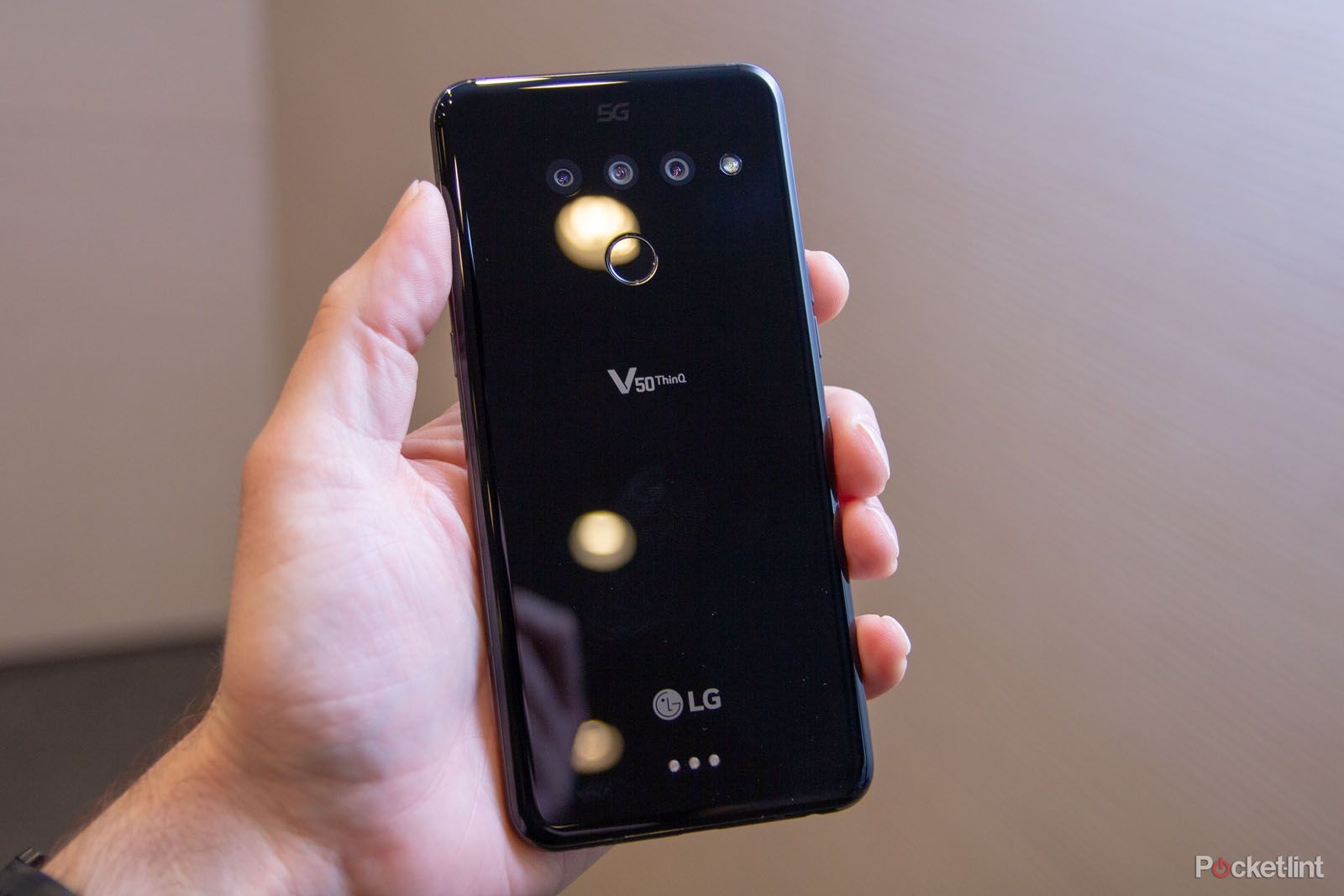
LG V50 ThinQ initial
| FOR | AGAINST |
|---|---|
|
|
|
Design and Build
- Gorilla Glass front and rear
- 159.2 x 76.1 x 8.3mm, 183g
- IP68 + MIL-STD
- Notch display
The LG V50 ThinQ has a familiar design with Gorilla Glass front and back. It's glossy, prone to fingerprint smears, but it's likely you'll slap a case on it - more on that in a second - and in fairness, the V50 looks pretty good.
It doesn't have the gloss of Samsung's S10 5G, but we do like the slim 8.3mm chassis and the fact that this phone isn't too big to get to grips with.
It comes with many of the familiar V series traits, like IP68 waterproofing and the MIL-STD drop protection, which you'd expect. Safe then, both in terms of the rugged design and the overall look. LG isn't going wild with colours and isn't even changing the notch at the top of the display much.
Strong and stable - or a little samey?
Hardware specs
- Qualcomm Snapdragon 855, 6GB RAM,
- 128GB RAM + microSD
- 4000mAh battery
What's perhaps more important is what's happened inside. As LG is changing up the hardware to something more powerful - 5G - there's a greater need for cooling. No longer does the LG V50 have a heat pipe, but a vapour chamber to disperse heat some 40 per cent faster.
There's still room inside for a 4000mAh battery, which sounds reasonably capacious, and there's Quick Charge 3.0 to make sure you can top it up quickly. LG reports that 5G will increase some battery demands, but they shouldn't be limiting.
Sitting at the heart of the LG is the new Qualcomm Snapdragon 855, the latest hardware in Qualcomm's arsenal and paired with the X50 modem - opening the door to 5G connectivity. This is going to be a common combination in 2019 and we're expecting a number of devices to offer this hardware.
How will it perform? At the moment we don't know: aside from promises of greater speed, greater efficiency and all the rest, we've not had the chance to put it through its paces. Similarly, 5G is still something of an unknown. We know what it will offer, but LG was pretty clear in saying that initial target markets for the V50 ThinQ are Korea and USA.
LG also confirmed that there would be support for all the US networks, whichever flavour of 5G they offer. We imagine, should networks in the UK and Europe want it, the V50 will travel wider, but there's no confirmation yet.
As previously, there's a Quad DAC in the V50, along with a 3.5mm headphone socket and Meridian tuned speakers - part of LG's wider audio pairing with the British company - and DTS:X Virtual Surround and LG's Boombox tech introduced on the LG G7 ThinQ.
A second screen story
- Phone screen: 6.4-inch OLED QHD+
- Dual screen accessory: 6.2-inch OLED FHD+
LG has also come out publicly and said that it's not doing a folding phone - despite it being well within LG's technical capabilities based on the strength of its OLED display business. But LG isn't just going to restrict you to using one boring screen like every other smartphone on the planet. No - the excitement comes from Dual Screen.
Dual Screen is an accessory display, a 6.2-inch OLED display that you can use to extend your phone. It comes in the form of a folio case, so you can open up your phone and have two displays. Both can work independently - opening apps on either side - and in some conditions, they can work together.
For example, you'll be able to have Google Maps open on the Dual Screen (that's the case bit) and you can be messaging away on your phone's main screen and share a full grab from the map so your pals know where to meet you.
Other options extend to the camera: you'll be able to flip the case over so that the person you're taking a photo of can see themselves and check that it's the photo they want or you can use it to line-up the camera at different angles like you might a vari-angle display on a camera. You can also use it to preview all the different views from the three rear cameras at the same time - very fancy.
Finally - and this is where it gets a bit more exciting - you can use it to play games. In this mode, you can have the game displayed in the top screen and controls on the bottom - like a Nintendo DS. LG's aim is to let this work with all games, just replicating the controls like you might get from Bluetooth controller.
It's an interesting idea - with the phone just dropping into the case, supplying power via contact pins on the rear and then using a new wireless protocol to connect the display. Certainly, it's an antidote to criticisms of not having a folding phone. Effectively. You're getting some of the advantages of larger display without the impracticalities.
The regular display is a 6.4-inch OLED panel and the first impressions are good, but really we need to spend more time with this phone to gauge the overall quality.
Triple cameras
- Rear: 12MP f/1.5 1.4µm; 16MP f/1.9 1.0µm wide-angle; 12MP f/2.4 1.0µm 2x zoom
- Front: 8MP f/1.9 standard; 5MP f/2.2 wide
LG is packing the V50 ThinQ full of cameras, offering regular, its favoured wide-angle and a zoom. The wide-angle camera comes in at 107 degrees while the zoom runs out to 2x optical, before flipping to digital. You can tap the icons to switch between cameras, as well as sliding the shutter button to move from one to the other in a smooth action.
It's impossible to judge the quality of these cameras, but LG has been putting in a pretty good showing in recent years. The main camera is 12-megapixel f/1.5 with 1.4µm pixels, with portrait mode grabbing depth information from the other cameras for bokeh effects. The bokeh extends to video too, so you can add some depth to those moving scenes too.
Video not only lets you capture 4K, but HDR too, as well as there being a YouTube Live button in the camera app.
The wide-angle has always been LG's preserve - but there's now challengers from Samsung, Huawei and others, taking the wide-angle and making it their own.
On the front the V50 ThinQ offers two cameras, again giving you portrait modes, as well as 80 and 90-degree cameras, so you can fit a little more in the selfie scene.
What you don't get is any of the fancy skills introduced on the LG G8 ThinQ, which use the time of flight camera to enable a range of new interactions - gesture controls - and hand unlocking. In that sense, there's a disparity between these phones: the G8 adds the newness, the V50 hits 5G.
To recap
Much of what the LG V50 ThinQ offers sounds familiar - and that's because it is. The LG V50 is an evolution of the LG V40, bringing much the same experience, a similar design and pretty close tech specs, but with some important bumps to accommodate 5G.

